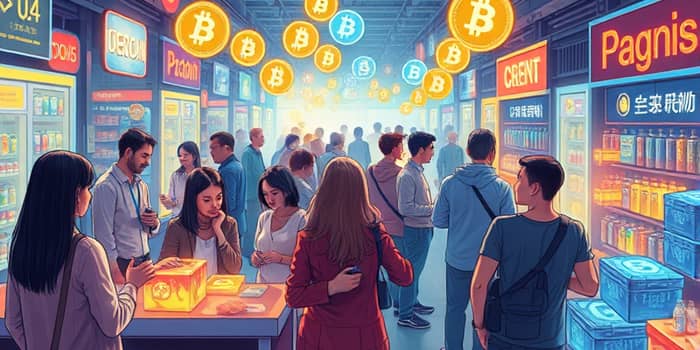
In recent years, digital collectibles have transcended niche blockchain circles to become powerful tools for engagement, loyalty, and revenue generation among major brands. What started as speculative assets is now evolving into tangible digital and physical experiences that reshape how consumers interact with their favorite companies.
At their core, digital collectibles—often referred to as NFTs—are unique digital assets recorded on a blockchain. This technology ensures decentralized digital ownership verification and offers brands a secure way to prove authenticity.
Blockchain-backed collectibles provide evidence of authentic digital provenance, making them ideal for limited-edition releases, membership tokens, or loyalty rewards. Smart contracts automate royalty payments whenever an asset changes hands, opening new revenue streams for creators and brands alike.
The global market for digital collectibles is experiencing explosive expansion. Forecasts vary but consistently point to triple-digit growth rates over the next decade. According to leading analyses, the market may surge from $27.3 billion in 2023 to $264.6 billion by 2032, representing a compound annual growth rate of 28.7%. Alternative projections anticipate a more conservative trajectory, estimating $54 billion by 2035 at a 17.3% CAGR, or roughly $75 billion by 2033 based on current trends.
While the total population holding NFTs remains small—around 0.35% in 2025—the user base is on the rise. Analysts predict 11.6 million global users by 2025, up from 10.2 million in 2023. Younger demographics drive most of this growth: roughly 5% of adults aged 18–34 owned at least one NFT in 2024, compared to just 1% of those over 55.
Mainstream brands are drawn to digital collectibles for several strategic reasons. They unlock first-party consumer data in a privacy-focused world, allowing companies to build direct relationships without relying on third-party cookies. Brands also tap into new revenue via secondary market royalties and can refresh loyalty programs into dynamic, gamified experiences that resonate with digital natives.
Furthermore, digital collectibles strengthen emotional bonds by offering exclusivity, membership perks, or access to limited events. They serve as both status symbols and functional keys to brand communities, satisfying Gen Z and Gen Alpha’s appetite for immersive fan engagement experiences with brands.
As digital collectibles mature, brands are focusing on long-term value rather than short-lived hype. Several trends dominate the landscape:
Underpinning these trends is a drive toward energy-efficient blockchain technologies for sustainability, as platforms transition to proof-of-stake and other low-carbon consensus mechanisms.
Regulatory clarity has improved with frameworks like the EU’s Markets in Crypto-Assets (MiCA) coming into effect in 2024 and U.S. legislation on the horizon. Enhanced oversight boosts consumer confidence and encourages institutional participation.
Onboarding and wallet technology have become far more user-friendly, eliminating complex Web3 hurdles. Simplified sign-up processes and custodial options ensure that even non-technical users can collect, trade, and redeem digital assets with minimal friction.
Despite rapid growth, the digital collectible market faces headwinds. Projects built solely on speculation often lose traction, underscoring the necessity for utility and longevity. Environmental concerns remain salient, although many platforms have addressed these criticisms through carbon-neutral initiatives.
Moreover, mainstream adoption still lags mass-market penetration. Only a fraction of consumers actively hold NFTs, indicating significant runway for growth—and a pressing need for brands to continue simplifying user journeys and demonstrating clear value propositions.
By 2025, owning a digital collectible may become as common as following brands on social media. Virtual wallets could be as ubiquitous as email accounts, and digital assets might serve as keys to entire brand ecosystems—from exclusive content to real-world event access.
Globally, brands across North America, Europe, and Asia Pacific will leverage local intellectual property, sports franchises, pop culture, and gaming partnerships to drive regional adoption. The next phase will likely involve deeper integrations with AR glasses, virtual reality experiences, and cross-platform digital identities.
The convergence of blockchain technology, consumer demand for meaningful digital ownership, and brand innovation heralds a new era in marketing and engagement. As digital collectibles evolve beyond novelty items into powerful loyalty and revenue tools, mainstream brands have a once-in-a-generation opportunity to redefine customer relationships.
By focusing on utility, sustainability, and intuitive experiences, companies can harness the full potential of digital collectibles, ensuring that these assets become indispensable pillars of modern brand ecosystems.
References













